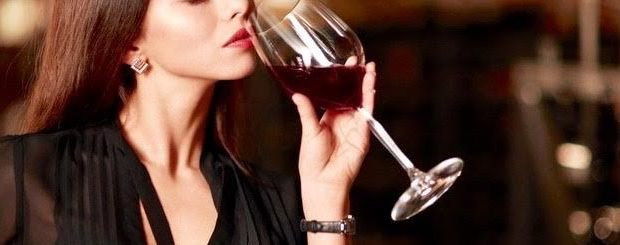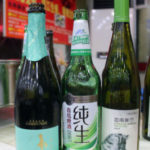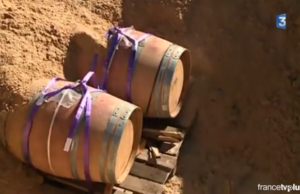Wine, Women and Subtle Sexism

Most enology graduates are women, so why aren’t there more women winemakers? James Lawrence asks.
To the casual observer, it’s a reasonably enlightened time for women in the global wine industry.
Some 35 years ago, women winemakers in nations such as Chile and the US were almost unheard of, as noticeable in their absence as balanced, terroir-driven wines were then.
But times change, if only gradually. As of December 2016, approximately 10 percent of all Californian wineries have women winemakers, while the number of female winemakers in Santa Barbara County is about 20 percent. In addition, the number of female sommeliers and wine professionals continues to rise globally. “When I started in the wine industry in 1978 there was one woman winemaker; today there are dozens. Women winemakers are no longer a novelty,” says Eileen Crane, CEO of Domaine Carneros.
The world of wine is still a long way from being an equal-opportunities employer. Particularly when one considers that the gender balance is roughly equal in most nations and I have never met a winemaker – excluding Emma Gao from Silver Heights – who wasn’t white, heterosexual and Caucasian (although that’s an issue for another day). “The current estimation of women in the Australian wine industry is 8-10 percent,” says Fiona Donald, senior winemaker at Seppeltsfield Wines. “How can this be when, at graduation, the gender ratio is 50:50?”
Indeed, educators constantly remind us that girls do better at school and college, they work harder and more diligently, achieve better results, break more records. So why doesn’t this translate into more female applicants?
“From personal experience, what is required of a winemaker at harvest time is not family-friendly. So, if you decide to have children, you and your family have to navigate who is the primary care-giver and, if it’s you, what are you and your family going to do at vintage? Some families cannot make it work and so sometimes it is the woman who pulls away from her chosen career,” says Donald.
“There have always been hard-working and resourceful women in the wine industry however their contributions often get overshadowed,” adds Australian winemaker Susan Mickan. “Men, in my experience, are far more comfortable in saying ‘I’; I did this or I did that, my idea etc. Women generally are far more inclusive, they tend to use the terms ‘we’, ‘us’, ‘together’. So it’s also a case of contributions being overlooked or not being seen.”
Nonetheless, despite Mickan’s assertions about a lack of visibility, it is plain as a pikestaff that women are still sorely underrepresented in the wine industry overall. Moreover, while the family incompatibility argument rings true to an extent, surely not all would-be female winemakers want children? What about the millions who balk at the idea of sleepless nights and a moribund sex life?
Equally, some of California’s most expensive and renowned wines – Colgin, anyone? – are overseen by women. Which surely proves that winemaking is a rewarding career regardless of your sex, a path that many women would aspire to. Or is it?
“I think that making wine is a truly awful job. It is hard work, akin to working on an oil rig, lugging big pipes around. My niece is an engineer on a North Sea oil rig for BP; she is also a captain in the Territorial Army. These are two jobs that I can only imagine as horrible as winemaking. There are few women who would want to do either of these jobs,” argues Bartholomew Broadbent of Broadbent Selections.
However, Eileen Crane suggests that this issue stretches beyond the demands of harvest time. “There is a boy’s club feel in many wineries, and hiring women changes that,” she says.
Such accusations of sexism are, of course, levied at many industries, particularly in areas like engineering, aviation and the armed forces. Yet, the general perception is that wine is a “nice” or softer industry, full of passionate professionals who love their craft.
But is the wine business, in actual fact, a bit sexist and even bigoted?
“I would say that in some American wineries, there is a macho and, probably, homophobic element,” answers Broadbent. “There are plenty of wineries which are not sexist but a lot are.”
His views are borne out by a cross-section of winemakers, working in both the US and Australia. Fiona Donald recalls an incident where a colleague suggested that she had slept with a senior male in the company to get her job, although she insists the occurrence of such an accusation was a one-off.
Others are more damning in their verdict. “There is definitely machismo in the wine industry; I have heard a general manager of a large wine business say that if he had his way he would employ only 30-year-old males, as they have a ‘hunger in their bellies’. It’s about setting up a culture that is competitive and combative. This is not an environment where everyone thrives,” observes Susan Mickan.
She continues: “I started in the wine industry where it was customary for suppliers to hand out ‘girly’ calendars and for offices to have posters of naked women. This overt sexism doesn’t exist anymore, but subtle sexism is still strongly practiced. Dealing with subtle sexism is far more difficult. You can change behavior – ie banning nude posters, but changing attitudes? The fact that we are still talking about remuneration discrepancies for the same work between men and women shows that there is still sexism within all industries.”
Her counterparts in the US also have similar tales to tell. “There is certainly less resistance these days, but just last harvest I walked by a table of visitors with a dismembered solenoid valve in one hand and a wrench in the other. When asked what I was doing, a gentlemen said he was surprised that I even knew what a solenoid was,” says Napa stalwart Cathy Corison.
Of course, identifying that sexism exists is very straightforward, tackling the issue is another matter altogether. It raises the essential question – what initiatives will achieve lasting change?
Eileen Crane suggests that such change can only come at the very top of the corporate structure. “What I believe the industry can do is include more women on board of directors. Boards that include women are more likely, in my opinion, to hire women CEOs. Women CEOs are more likely to hire women managers or winemakers,” says Crane.
“The majority of students in the UC Davis enology department today are women. So the interest of women is there. The educational qualifications are there, they just need someone to open the door to their first winery job. That door opening is likely to come from the trickle-down from the top,” she adds.
Meanwhile Fiona Donald stresses the importance of wineries adopting more flexible working arrangements. “Women are coming into the industry but leaving,” she says. “The wine companies who seek to retain experienced female winemakers who are starting families, are negotiating flexible working arrangements, different roles, temporary positions etc. This is a realistic approach to the realities of life.”
And while nobody is suggesting that miracles will happen overnight, most agree that the industry had made, as the late Christopher Hitchens was fond of saying, progress of a kind.
“When I started selling wine in the US back in the 1980s, there were very few women working for wine distributors,” Bartholomew Broadbent says. Today, most companies, beyond the big liquor distributors (which still tend to be macho and chauvinistic environments) have large proportions of women among their sales staff.”
Or, as Cathy Corison so eloquently describes: “Over the last four decades, women have become involved at all levels in wineries and vineyards. The pipeline is full of hardworking, talented women ready to step into top positions. Patience is hard, but our society is slowly but surely moving toward gender-blind hiring. The question is – in which lifetime will it be fully achieved?”



















